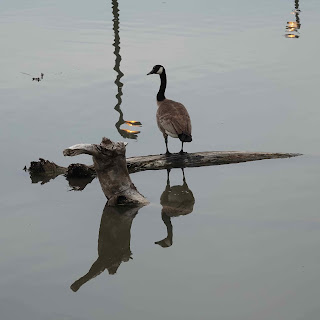“I have met but with one or two persons in the
course of my life
who
understood the art of Walking, that is, of taking walks –
who had a genius, so to speak, for
SAUNTERING...”
- Henry David Thoreau, American Philosopher and
Walker
1817-1862
Regular
readers of this blog will know that I love to wander with a camera. With no particular
goal for my photos, I derive great pleasure discovering visual treasures while
just...wandering.
Henry David
Thoreau, the great American philosopher and writer, recently reminded me of
another word for walking: sauntering. Thoreau was an avid 19th century walker
who frequently referred to himself as a saunterer. (The fact that he also had
friends and family who did his laundry and cooked his meals certainly freed up
his time for sauntering, but that’s another story!)
Thoreau
wrote a brief book about walking, appropriately called Walking. (A free Kindle ebook on Amazon, BTW.) In the opening pages
of that book, he describes the derivation of the word ‘saunter’:
“...beautifully
derived ‘from idle people who roved about the country, in the Middle Ages, and
asked charity, under the pretense of going a la Sainte Terre,’ to the Holy
Land, till the children exclaimed, ‘There goes a Sainte-Terre,’ a Saunterer, a
Holy-Lander. They who never go to the Holy Land in their walks, as they
pretend, are indeed mere idlers and vagabonds; but they who do go there are
saunterers in the good sense, such as I mean. Some however, would derive the
word from sans terre without land or a home...”
Thoreau
goes on a bit more about this, as Thoreau tends to do, but this quotation captures
the essence of his thinking.
Without
claiming that I am heading towards the Holy Land, I do like the word ‘saunter’
to describe what my camera and I do.
Which brings
me to nearby Brighton. Two weeks ago, Bill and I drove there so he could help
with the community quilt show. While he was doing that, I had two uninterrupted
hours to saunter through the town with my camera. It’s a pretty community, with
an active sense of history and a tidy sense of landscape.
One of
Brighton’s gems is the Memory Junction Railway Museum. Situated next to the
busy VIA Rail Canada, Canadian National Railway, and Canadian Pacific Railway
main lines, the museum is housed in the old Grand Trunk Railway station. Two
local angels, Ralph and Eugenia Bangay, bought the station and adjacent
property in 1995 for their growing collection of railway equipment, including a
1906 Grand Trunk Railway 2-8-0 steam locomotive (#2534). You can still see the museum on the north side
of the tracks as you whiz through Brighton on VIA trains to/from Toronto. The
museum was created as an absolute labour of love, with an impressive
collection.
Alas, it
has fallen on hard times. The Bangays are no longer able to handle the demands
of maintaining the museum, so it is closed. I had heard that the property was for
sale, but I can’t confirm it.
And that’s
where I ended up for an hour, sauntering through the outdoor collection of freight
cars, cabooses, and railway paraphernalia, not to mention that magnificent locomotive.
It was both a happy time and a sad time for me – almost like visiting the
remains of dinosaurs. Ghosts lingered at every turn.
This museum
is in need of both guardian angels and box cars of money to be restored to its
prime.
These photos,
all made on the grounds of Memory Junction, give you a flavour of the special
place it once was – and could be again. Enjoy.
I plan to be in Manhattan for a few days, so I will not be posting in a week's time. I hope to post later next week.

























